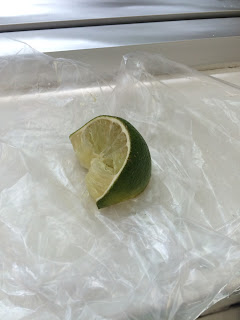The first real harvest from the aquaponics system I have been blogging about occurred several days ago. The harvest produced not as much lettuce as I was hoping. However, this first harvest was only a trial and I hope to build upon the experiences of the past couple months to perfect the second. I am pleased that I had the opportunity to donate the lettuces to a local food pantry. Below I discuss some of the challenges I faced over the last several weeks.
Lighting Issues
When the lettuces began to stretch, I knew they were not receiving enough light. I was not very excited about the prospect of dumping a good amount of money on lighting. Thus I purchased two strips of LED lights which were significantly cheaper. I set the lights up and noticed some positive growth, but then the leaves began to cripple and dry. The stems began to stretch again and I was brought back to square one. I resorted to traditional lighting methods and within hours noticed that they began to look much healthier.
 |
| Extremely long stem with undeveloped leaved |
At this point the plants already appeared out of proportion. The stems were very lengthy and the leaves were undeveloped. Next time I will ensure the plants receive proper lighting throughout the entire growth period.
 |
| Burnt Leaves |
Another problem that occurred was that the lights burned the leaves of the plant. I have only myself to blame because I should have moved the lights higher above the plants. As a result of the burnt and crippled leaves, a portion of the lettuce was inedible. Next time I plan on using a reflector in hopes of preventing the plants from stretching towards the lights and burning.
Water Flow
Despite harvesting 30+ lettuces, the system was not fully functional. I am a very cautious person and was hesitant to let the water flow through the system continually. I feared it overflowing or leaking. Most of the time I let water sit in the tubes. During the times water was flowing, it was being monitored.
 |
| Fortunately, most of the lettuces looked great! |

The Next Harvest
The goals for for the upcoming weeks are obvious: allow proper lighting, do not let the leaves burn, and allow for continual flow of water throughout the system. In addition to the changes I will make to achieve these goals, I will introduce two new varieties of lettuce. The three varieties will be black Seeded Simpson, Red, and Bib. The reason for the bib lettuce is that they maintain a more sturdy shape and would be easier to donate. I am very fortunate and thankful for the opportunity to be involved in what I believe to be the future of agriculture.
























